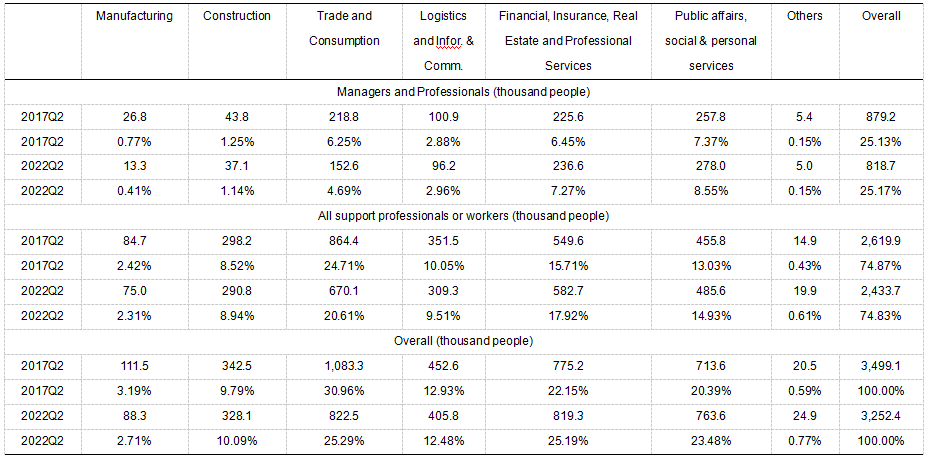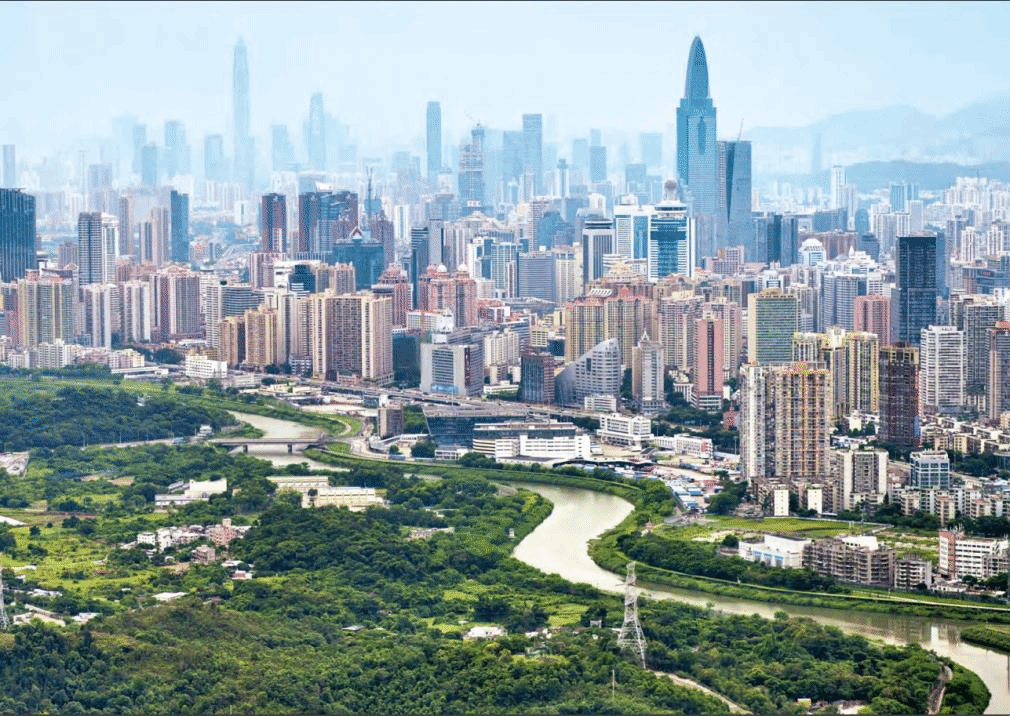Author: Dr. Chen Xi, Founder and CEO of Harbor Overseas
Published on 29thSeptember
In 2021, then Hong Kong chief executive Carrie Lam Cheng Yuet-ngor unveiled the Northern Metropolis Development Strategy (NMDS) to develop the districts of the Chinese special administrative region (SAR) bordering Shenzhen guided by the goal of integrating with the mainland special economic zone (SEZ). The plan has become a key part of Hong Kong’s participation in and contribution to the Guangdong-Hong Kong-Macau Greater Bay Area (GBA) initiative, Beijing’s megapolis concept that includes nine cities and two SARs in South China, aimed at becoming a major pole of innovation and growth to rival tech enterprise clusters around the world such as Silicon Valley in California.
Can the NMDS and the GBA become real drivers of growth for Hong Kong, as it recovers from the pains and stresses to its economy from the 2019 protests and the nearly three years of the pandemic?
It is important to understand the core structural issues that the SAR faces and the solutions on the table. Excessive concentration of capital and human resources in the financial, real estate, consulting, legal and other service industries have made it more and more difficult for Hong Kong to provide high-quality job opportunities for its young people, who are typically unable to buy their first home early in their careers, and those in poverty, who are unemployed or underemployed and cannot afford any decent housing. The poor and the “poor” urban middle class, particularly the youth, have become the biggest challenge to the social stability of Hong Kong, as amply demonstrated by the events of 2019.
Some experts have proposed the building of public rental housing and the promotion of the high-tech industry in the northern districts of Hong Kong that abut the mainland SEZ of Shenzhen. This is a feasible plan. There are large tracts of land available for development in the northern New Territories. The new chief executive of Hong Kong has the political will and the “honeymoon” capacity to cut through the red tape, simplify administrative procedures and speed up the resolution of property rights and legislative issues and other obstacles. Meanwhile, the high-tech industry can indeed provide a large number of high-quality jobs.
But can the Hong Kong government achieve its goal? It will be very difficult.
Recognizing the capacity gaps
According to data released by the Hong Kong Bureau of Statistics, there are four types of jobs in Hong Kong: trade and consumption (25 percent of total employment); logistics and information communication (12 percent); finance, real estate and professional services (25 percent); and public affairs (23 percent). These sectors underpin Hong Kong's status as a global trade, logistics and financial center.
In the past five years (from the second quarter of 2017 to the second quarter of 2022), although Hong Kong's trade, consumption and logistics-related jobs and their share of total employment have declined as expected (from 43.89 percent to 37.77 percent), the share of total positions in finance, insurance, real estate and professional services, as well in public affairs, increased unexpectedly, from 22.15 percent to 25.19 percent). Reckoning for senior-level jobs, the latter sectors accounted for 54.99 percent of positions in Hong Kong in 2017, rising to 62.85 percent (or two out of every three senior-level jobs) in 2022.
Even though the world has entered a period of recession, Hong Kong's job market indicates that these key sectors continue to offer significant employment opportunities. According official data, 65.17 percent of job vacancies in the first quarter of 2022 were in the finance, insurance, real estate, professional services, and public affairs sectors, compared to 45.54 percent five years ago.

Figure 1. the number of employed persons by industry and occupation (excluding foreign domestic helpers)

Figure 2. the number of job vacancies and proportions by industry (excluding civil services)
Where the real growth is
We reviewed the middle line (San Tin Technopole-Kwu Tung North Development Area-Lo Wu/Man Kam To Comprehensive Development Node) and the west line (Yuen Long-Tin Shui Wai) of the Northern Metropolis Development Strategy. We found that development along the middle line would provide up to 148,000 high-tech jobs and up to 147,000 residential units, with up to 8,000 high-tech jobs and 70,000 residential units along the west line.
On further examination, we note that the area along the middle line which is centered on finance, real estate and professional services may therefore have high housing prices, which is not beneficial to incubating emerging high-tech companies. New residents in this zone will likely be from the high-end service industries along the core Lok Ma Chau-Tsimshatsui-Central line. We recognize the importance of the middle-line plan, which will promote the coordinated development of Shenzhen and Hong Kong in the Lok Ma Chau Loop. But to maintain social stability and sustainable development in Hong Kong, it should not continue to be constrained by limited capital and human resources flowing to the high-end service industries (about 1.5829 million people in total), but should be provide new opportunities for the other 1.6696 million people from the mid-to-lower-end service industries by creating high-tech or new manufacturing jobs for them.
A talent structure not conducive to technological innovation
In the recently published2022 Asia Smart City Ranking, Hong Kong and Macau unexpectedly failed to perform well. Compared with Shenzhen and Guangzhou, Hong Kong and Macau are significantly behind in building a data factory market and drawing in citizens to participate in new data-driven sectors such as the sharing economy. This is evident in the gap between Hong Kong and the mainland in the everyday use of mobile apps and services, including digital payments.
A large number of the policy recommendations for Hong Kong and indeed the mainland to spur new growth are predicated on science and technology innovation, but half of Hong Kong's talent are in finance or the high-end services sectors, while the other half are mainly in trade, consumption, logistics and construction. By dint of that skills structure and capacity, Hong Kong seems to be unready for technology innovation.

Hong Kong-Shenzhen border: What is required is high-level rail transit and optical-fiber communications systems to connect small factories and innovation hubs (Credit: HKSARG)
Set a vision - and take action
The talent pool in Hong Kong needs reallocation. What is needed is high-quality employment for people working in the mid-to-lower-end service industries. This is a great challenge but without complex solutions or shortcuts. Only by setting out a broad vision and just taking action can Hong Kong overcome this capacity problem.
Two remedies:
First, build high-level factories along the west line and encourage small, medium and micro enterprises (MSMEs) to provide high-quality jobs for people engaged in mid-to-lower-end service industries. On the west line, the Hong Kong-Zhuhai-Macao Bridge and Shenzhen Bay Bridge have essentially formed a Greater Bay Area Ring Road linking key areas including Nansha, Guangzhou-Dongguan-Baoan and Qianhai, Shenzhen-Yuen Long, Tin Shui Wai and Lantau Island, Hong Kong-Zhuhai and Macau-Zhongshan. The key nodes are Yuen Long and Lantau Island in the west of Hong Kong. This loop passes through the world's busiest seaports and airports. If the three “infrastructures” – traditional (hard), digital and institutional-are used to promote regional integration, this will not only provide high-quality jobs for people in the mid-to-lower-end service industries but also create new markets for financial, real estate and professional services along the middle line.
Second, connectivity is key. There is no need along the west line for large-scale financial or real estate projects led by digital or financial giants. What is required is high-level rail transit and optical-fiber communications system to connect small factories and innovation hubs along the line. Focus on the entire Pearl River estuary and build small-scale digital satellite city clusters and improve the digital literacy among the communities in the area. This will attract more financial or governmental expertise to transfer to participate in cross-regional digital initiatives.
If Hong Kong persists on focusing all its interest and attention on the traditionally favored Lok Ma Chau-Tsimshatsui-Central line, it will be difficult to create enough high-tech and manufacturing jobs and spur any change in the SAR’s talent structure. And it will be impossible mitigate the mounting risk of renewed social unrest.
A model for Asian economies
The Food and Agriculture Organization (FAO) and the World Meteorological Organization (WMO) have clear signaled that climate change and regional conflicts endangered food, energy and health security around the world, raising the specter of social instability. Historically, whether in Asia or Europe, food shortages and epidemics have often been the cause sociopolitical turmoil.No economies expect to be immune from the stresses of globalization and geopolitical turbulence. The critical course is to maintain be pragmatic and consider the big picture, the global landscape.
It is impossible for the economies or interests group to deal with the pressing global challenges such as climate change alone. In working with mainland partners and forging a strategy for sustainable development and sourcing new growth and opportunities, Hong Kong can be a leader, a model for the region. Decision makers in countries across Asia and beyond have to find ways to reconcile political, economic and cultural forces to promote regional integration. And they need to address complex issues if they are to provide the resourceful governance at all levels needed to develop the hard and soft infrastructure required to create jobs of the future. However hard it will be to achieve, success in reshaping Hong Kong amid all the cross-currents and turbulence that have stymied its economy in recent years will provide lessons for the rest of Asia on how to get past all the same problems to promote regional peace and stability by focusing on the overriding goal: increasing opportunities for and improving the wellbeing of their people.
Chinese version is published in Harbor Overseas, on 29thSeptember:
https://www.harbor-overseas.com/shows/8/97.html
English version is published in Asia Global Institute at Hong Kong University on 29thSeptember:
https://www.asiaglobalonline.hku.hk/no-easy-path-reinvigorating-hong-kong-greater-bay-area-initiative
